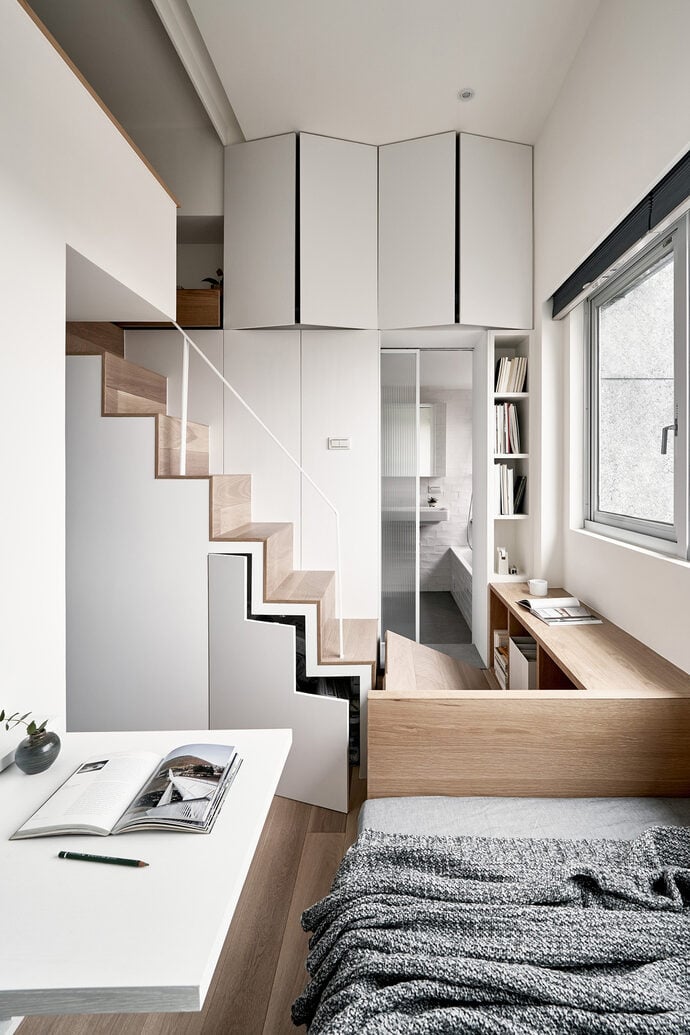
Micro Living: Making a Big Impact with Small Spaces
Unraveling the Micro Living Revolution
In today’s rapidly changing urban landscape, the concept of micro-living is steadily gaining traction. But what is microliving?
Essentially, it’s an approach to housing and interior design that maximizes function in minimal spaces. Think micro living tiny homes that are both compact and sustainable or micro apartments that cleverly utilize every inch. These small spaces aren’t just architectural marvels—they signify a global shift towards sustainable living, reduced ecological footprints, and the embrace of minimalism.
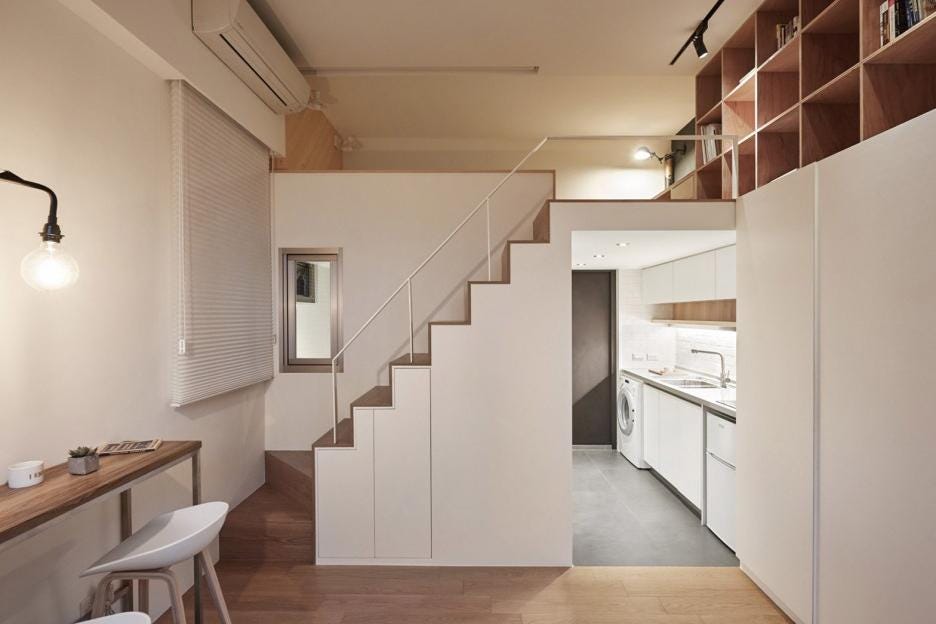
Why Embrace Micro Living?
Reaping Ecological and Financial Rewards: Firstly, micro-living has clear environmental advantages. Transitioning to such a lifestyle directly corresponds to a reduced carbon footprint, as smaller spaces consume fewer resources. Microliving apartments, in particular, are becoming popular in urban areas, offering an eco-friendly housing alternative. Moreover, there’s the undeniable financial allure. Opting for micro apartment living often means lower utility bills, decreased rent, and reduced maintenance costs.
Minimalist Magnetism: Beyond tangible benefits, micro-living resonates with those inclined towards simplicity and minimalism. It’s a lifestyle that demands the elimination of excess, urging us to prioritize quality over quantity. For many, this presents an opportunity to declutter mentally and physically, fostering a sense of freedom.
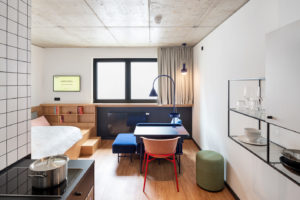
Designing for Micro Living: Making Small Spaces Shine
Embracing Multi-functional Marvels
The quest for maximizing space in micro-living environments demands innovative furniture choices. Central to this is the selection of micro-living furniture that is both sleek in design and multifunctional in nature. Consider a sleek sofa that seamlessly transforms into a comfortable bed at night or a coffee table equipped with hidden storage compartments. When every piece of furniture can perform dual or even triple duties, you not only conserve precious floor space but elevate the overall utility of the room. These aren’t just furniture pieces; they’re ingenious solutions tailored for compact living.
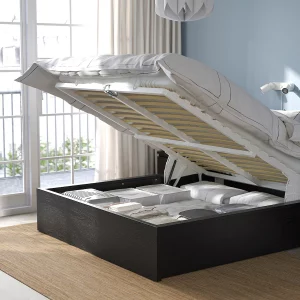
Reimagining Vertical Spaces
Traditional designs focus on horizontal expansions, but micro-living architecture flips this on its head. Vertical spaces, often overlooked in conventional settings, become prime real estate. Wall-mounted shelves can house books, decor, or even a vertical garden. Hanging storage solutions can free up floor space while ensuring essentials are within arm’s reach. Even beds can go vertical with lofted designs, leaving room beneath for workspaces or lounging areas. By leveraging height, micro-living designs extract potential from every inch of a room, turning walls into functional canvases.
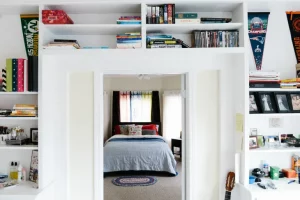
Lighting: The Illusionist’s Tool
When working with limited square footage, the play of light becomes a designer’s most potent tool. In microliving environments, harnessing natural light can dramatically alter the ambience. Large windows, if feasible, or strategically placed mirrors can bounce light around, making spaces feel open and expansive. Beyond natural light, the placement of lamps and fixtures is crucial. Directed lighting can create focus points, spotlighting artwork or furniture, while soft ambient lighting can provide a cozy, spacious feel. In microspaces, light isn’t just for visibility; it’s a design element that shapes perception.
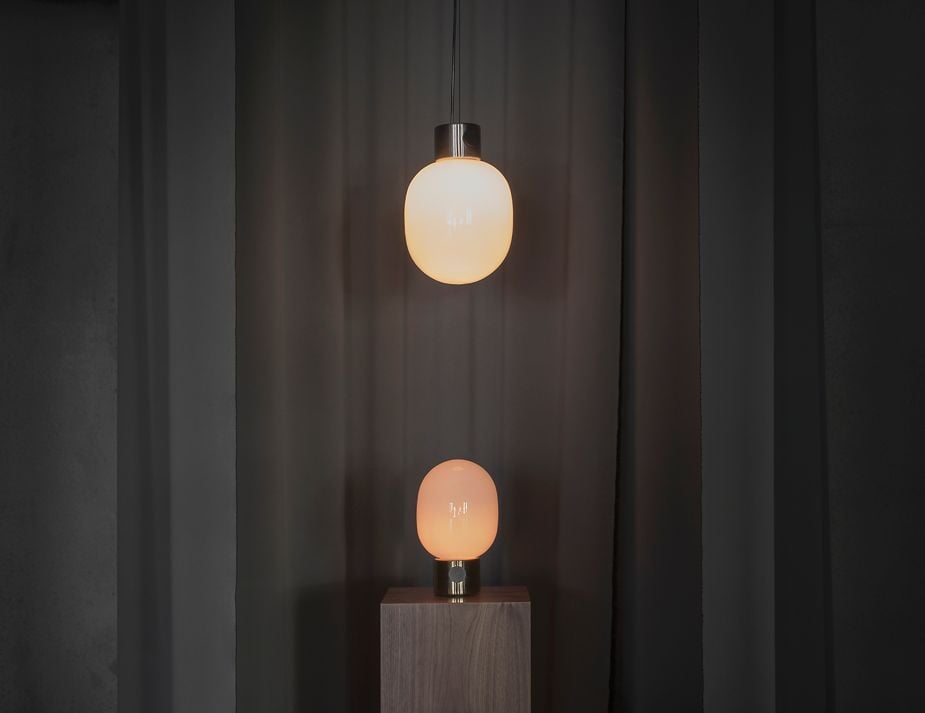
Colors that Communicate
Palette choices play a pivotal role in micro-living apartments. While spacious homes can indulge in a variety of hues without consequence, compact spaces require a more considered approach. Light, neutral colours—like whites, creams, or pastel shades—can reflect light and amplify the sense of space. They serve as a canvas, making rooms feel airy and open. On the other hand, strategic use of accent colors, through decor or feature walls, can introduce depth and personality. The key is balance. Introduce vibrancy without overwhelming the senses, ensuring that the chosen colours communicate both style and spaciousness.
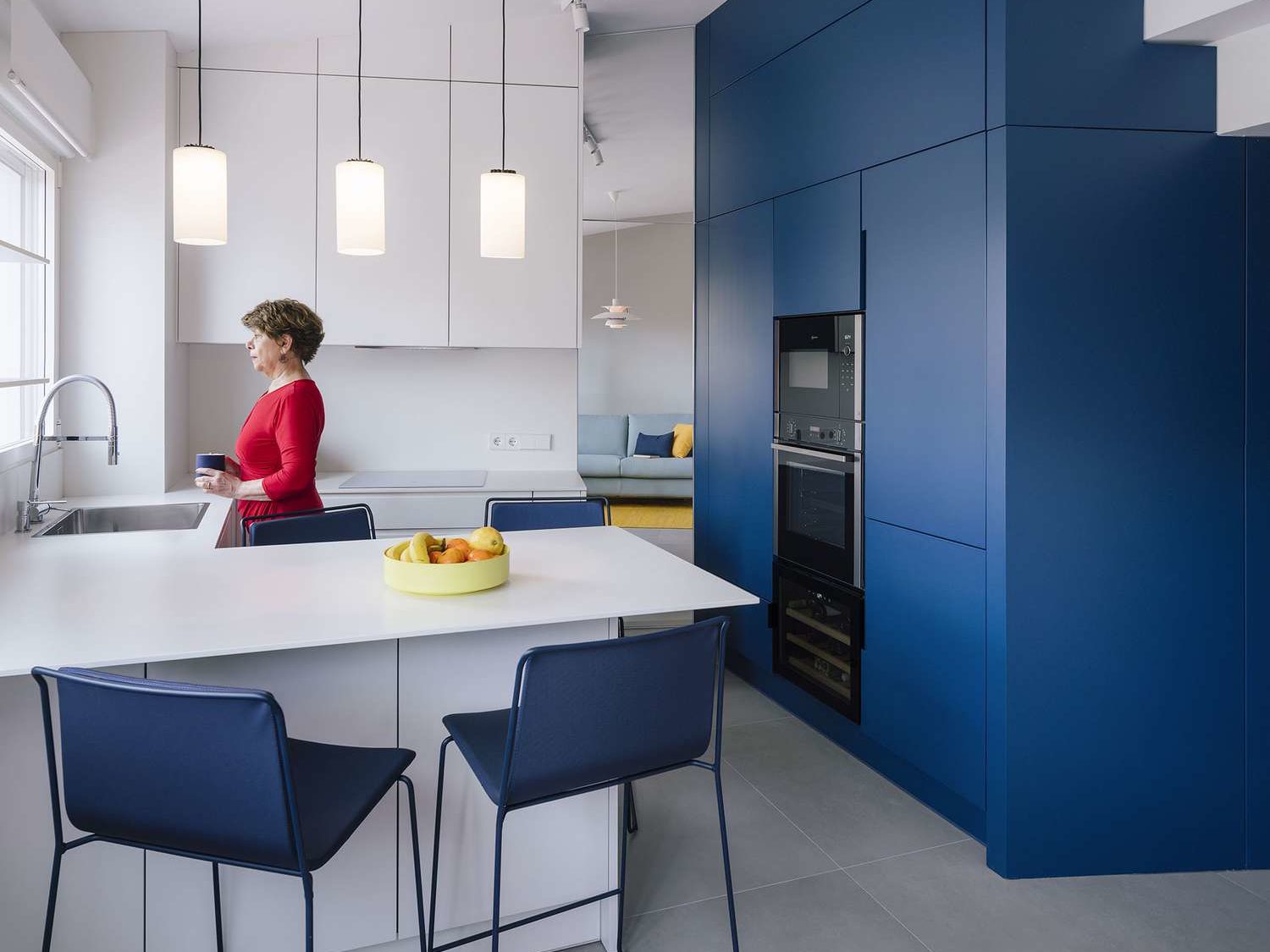
Maximising Storage in the Micro Universe
Secret Storage Sanctuaries: One of the cornerstones of micro-living is smart storage. Hidden storage solutions, such as under-bed compartments, built-in closets, and furniture with concealed compartments, become your best allies. In the world of micro-living tiny homes and apartments, these hidden gems ensure every available space serves a purpose.
Declutter – Less is More: With limited space, decluttering is non-negotiable. Methods like the Marie Kondo approach emphasize the importance of retaining only items that “spark joy.” Transitioning to micro-home living invites residents to evaluate possessions critically, cherishing the essentials and shedding the superfluous.
Digital Transition – Embrace the Virtual: A significant aspect of decluttering in today’s age involves digital solutions. Opt for e-books over physical ones, use cloud storage for documents, and consider streaming services instead of physical media. Such shifts not only save physical space but also reduce environmental waste.
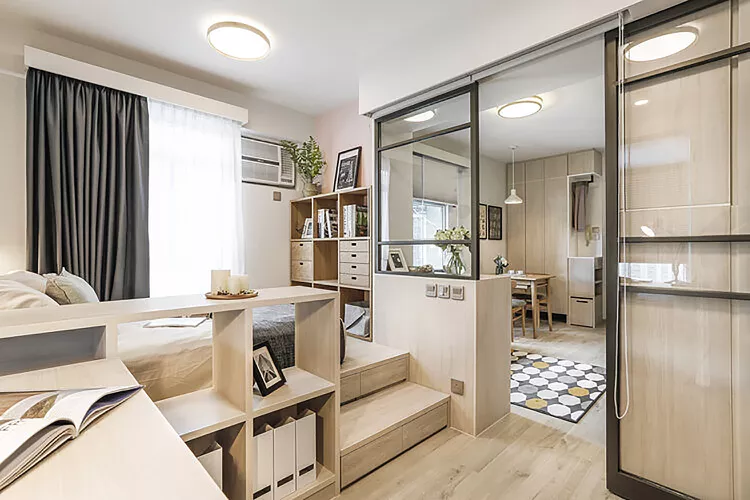
Technology and Micro Living: A Seamless Blend
Smart Homes in Small Packages: Incorporating technology can be a game-changer in micro-living. Voice assistants, automated lighting, and adjustable heating systems tailored for micro-living apartments ensure comfort without compromising on space. These tools enhance the living experience, making spaces feel modern and connected.
Compact yet Capable: Micro living demands a rethink of traditional appliances. Compact, multi-use gadgets—like a combination microwave oven or a washer-dryer unit—save space while delivering functionality.
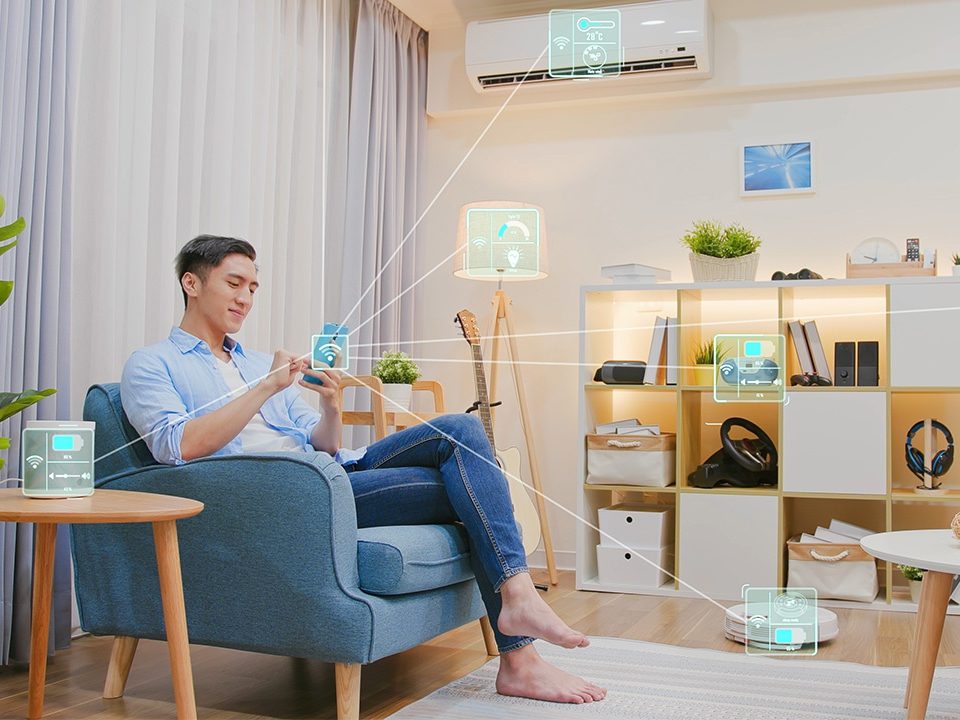
Challenges and Solutions in the Micro Domain
Creating the Illusion of Space
Microliving, while innovative and sustainable, often grapples with the issue of feeling confined or restricted. The key lies in manipulating perceptions. Incorporating large, strategically placed mirrors not only bounces light around but effectively doubles the perceived space. Furniture choices play a crucial role too; opt for pieces that are scaled appropriately, ensuring they don’t overpower the space. Glass or acrylic furniture, for instance, offers functionality without visually crowding a room. Furthermore, the concept of zoning is invaluable. By demarcating specific areas for work, sleep, or relaxation—even within the confines of a studio—you add structure, breaking the monotony and lending a sense of expansiveness.
Infusing Personality without Clutter
Embracing micro-living doesn’t necessitate forgoing personal flair. The challenge lies in striking a balance between minimalism and expression. Wall art, chosen thoughtfully, can introduce colour and character without consuming floor space. Cushions and rugs, in vibrant patterns or textures, can be instrumental in setting the mood and reflecting personal tastes. The beauty of these accessories is their flexibility; they can be periodically switched out, letting the decor evolve without major overhauls. The mantra here is ‘less but meaningful’. Each chosen piece should resonate with one’s personality while complementing the overall design narrative.
Socializing in Compact Corners
One might assume that entertaining in micro spaces is a daunting task, but it simply requires a touch of ingenuity. Furniture that is both functional and adaptable is your ally. Stackable chairs, which can be stored away when not in use, or tables with extendable features, can accommodate guests without permanent encroachment on living space. For casual gatherings, floor cushions or ottomans can transform living areas into cozy nooks perfect for conversations. Lighting can be adjusted to set the right ambience, with dimmable lights or candles creating a warm, inviting atmosphere. Ultimately, it’s not the size but the experience that matters, and with the right approach, even compact corners can host memorable gatherings.
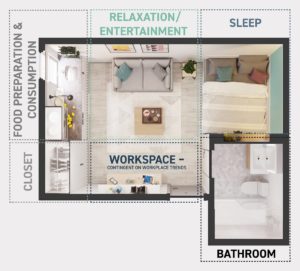
Concluding Thoughts: The Big Picture of Micro Living
Beyond Square Meters – A Lifestyle Shift: Micro living is more than an architectural or design trend; it’s a reflection of a broader societal shift towards sustainability, simplicity, and conscious living. While the spaces might be small, the impact is substantial. Micro apartments, tiny homes, and innovative design choices represent a future where we optimize resources, prioritize experiences over possessions, and find contentment in smaller, meaningful spaces.
A Call to Embrace the Micro Movement: If you’ve ever pondered what micro living might hold for you, now’s the time to explore. Whether it’s reimagining your existing space or taking the plunge into a micro-living apartment or tiny home, the opportunities are boundless. Remember, in the realm of micro-living, it’s not about sacrifice, but about making deliberate, impactful choices.
Expand Your Horizon with More Resources: For those intrigued, delve deeper into this world with our recommended reads on tiny living and minimalism. Explore design inspirations, join micro-living communities, and keep abreast of the latest in micro-living architecture. Let these resources guide your journey as you redefine space, purpose, and living.
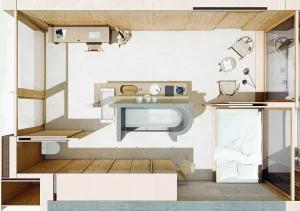
Frequently Asked Questions
Smaller spaces might lead to clutter more quickly, can challenge mental well-being due to the lack of personal space, and might not be ideal for those with larger families or certain hobbies.
A micro apartment is a compact living space, often in urban settings, designed to provide essential functionalities within limited square footage, typically ranging from 200 to 500 square feet.
Given their reduced carbon footprint, efficient use of resources, and promotion of minimalistic living, micro-apartments could be seen as a more sustainable and environmentally conscious housing choice.
Micro apartments, given their appeal to urban dwellers and those seeking affordability, often have competitive rental rates, potentially yielding a higher return on investment, especially in prime city locations.
Microhomes are often made from a mix of traditional building materials like wood and steel and sometimes incorporate sustainable materials or recycled components.
